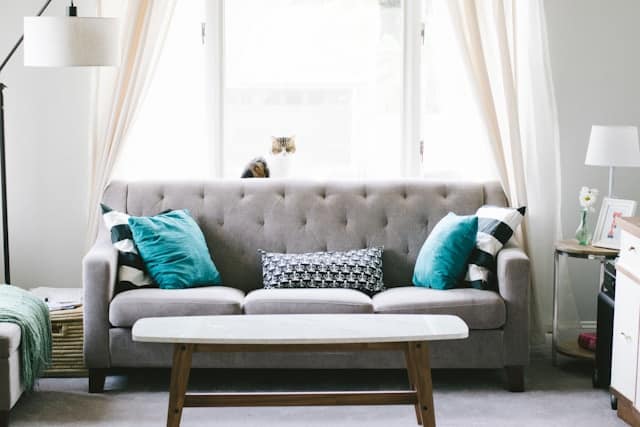How to Design a Home Office that Encourages Movement and Reduces Sedentary Time?

Designing a home office that encourages movement and reduces sedentary time is a crucial aspect of maintaining physical health while working from home. Prolonged periods of sitting, a common behavior in many employees’ daily routines, can have detrimental effects on health and fitness. However, with careful planning and conscious effort, you can make your workspace an active environment that promotes movement and well-being.
1. Understanding the Effects of Sedentary Behavior
Before delving into the methods of creating an active workspace, it’s essential to understand the consequences of a sedentary lifestyle. According to a study published in PubMed and PMC, excessive sitting time can lead to a variety of health issues, such as cardiovascular disease, diabetes, and weight gain. A lack of physical activity can also negatively impact mental health, resulting in symptoms of depression and anxiety.
En parallèle : What Are the Best Low-Light Tolerant Trees for a Shaded Front Garden?
Long hours of sitting are often an inherent part of office work, whether it’s in a traditional office or a home workspace. As many of you have transitioned to working remotely, the lines between work and leisure time have blurred. Consequently, it’s not uncommon to find employees spending more time at their desks, leading to an increase in sedentary behavior.
2. Embracing the Standing Desk
A standing desk is a useful tool to encourage movement and alleviate the harmful effects of prolonged sitting. While it might take some time to get used to, a standing desk offers numerous benefits for your physical health. For starters, it helps to burn more calories compared to sitting, leading to better weight management.
A voir aussi : What’s the Best Way to Incorporate a Wind Turbine into a Suburban Home?
Standing has also been shown to boost energy levels, productivity, and overall mood, as cited in various PubMed studies. It’s also worth noting that alternating between sitting and standing reduces the risk of developing musculoskeletal disorders, a common ailment among office workers. Keep in mind that the key is not to spend all your time standing, but to promote a balance between sitting and standing throughout the day.
3. Incorporating Exercise into Your Routine
Exercise plays an invaluable role in combating the effects of a sedentary lifestyle. It doesn’t mean that you have to engage in high-intensity workouts in the middle of your workday. Simple exercises, such as stretching or yoga, can be easily incorporated into your routine.
Consider setting reminders every hour to perform a quick set of stretches or a brief walk around your home. You might also want to invest in an exercise ball to use as a chair. It not only helps in maintaining posture but also engages your core muscles while sitting. Remember, every bit of movement counts and contributes to your overall fitness.
4. Optimizing Your Workspace Layout
The layout of your home office can significantly influence your movement. For instance, strategically placing your equipment and supplies can encourage you to stand up and move regularly. You might want to place your printer or file cabinets at a distance from your desk, providing you with an opportunity to stand and walk a few steps.
Another effective strategy is to have a separate area for relaxing or brainstorming ideas, away from your workspace. This will break the monotony of sitting at your desk, sparking creativity and productivity. A well-optimized workspace layout, coupled with a commitment to regular exercise, will undoubtedly help reduce sedentary behavior.
5. Investing in Ergonomic Furniture and Accessories
Ergonomic furniture and accessories are designed with comfort and efficiency in mind. They support the natural curvature of your body, reducing the strain on your muscles and joints. An ergonomic chair, for instance, encourages proper posture, lowering the risk of back pain and other physical discomforts associated with long hours of sitting.
You might also want to consider a keyboard and mouse designed to reduce strain on your hands and wrists. Such investments not only contribute to physical health but also enhance your overall work experience. Remember, the goal is to create a home office that promotes health, wellness, and productivity.
Incorporating these strategies into your home office design will undoubtedly make a significant difference in reducing sedentary time and promoting physical activity. As you continue to adapt to the evolving nature of work, remember that your health and well-being should always be a priority.
6. Adopting Movement Breaks and Active Meetings
One of the simple ways to infuse physical activity into your work routine is through movement breaks. Consider setting an alarm every 45 minutes to an hour as a reminder to stand up, stretch, or take a quick walk around the house. This not only promotes physical movement but also helps to refresh your mind, thereby boosting productivity and creativity.
As more of us are transitioning to remote work, virtual meetings have become the new norm. Opting for active meetings can be a great way to encourage movement. For instance, consider having walking meetings where you discuss work while taking a stroll. Alternatively, you could also conduct standing meetings. These strategies significantly reduce prolonged sitting and foster a healthy work environment.
Moreover, several free articles on PMC and PubMed corroborate the benefits of movement breaks and active meetings. They can improve cardiovascular health, mental well-being, and overall work performance. Undeniably, adopting such practices can transform your sedentary work routine into an active one and reinforce workplace wellness.
7. Encouraging Mindfulness and Regular Breaks
Mindfulness in the context of remote work refers to being aware of one’s physical state and consciously making an effort to maintain a healthy balance of sitting, standing, and walking. It is vital to pay attention to your body’s signals. If you notice any discomfort or strain from sitting too long, stand up, stretch, or take a brief walk.
Regular breaks are equally important. Spending hours focused on work without breaks can lead to burnout and adversely affect your physical and mental health. Taking short breaks to engage in physical activity or even to rest can boost your energy levels, creativity, and productivity.
A Google Scholar search will reveal numerous articles reaffirming the benefits of mindfulness and regular breaks. They are critical components of a healthy and active work routine. By encouraging employees to embrace these practices, you can create an activity workplace that promotes wellness and reduces sedentary behavior.
Conclusion
Designing a home office that promotes movement and reduces sedentary time is not just beneficial but necessary for our health and well-being. The shift to remote work has blurred the lines between professional and personal life, making it even more essential to consciously incorporate physical activity into our daily routines.
The use of standing desks, the adoption of movement breaks and active meetings, and the practice of mindfulness are all effective strategies for promoting physical activity. The crossref Google and PubMed Google databases contain several studies that back these methods.
Remember, every bit of movement counts. Be it a brief stretch, a quick walk, or using an exercise ball as a chair, every effort towards reducing sedentary behavior counts. It is time to rethink our work habits and redesign our workspaces to promote physical movement, wellness, and productivity. Your health and well-being are worth the effort!
